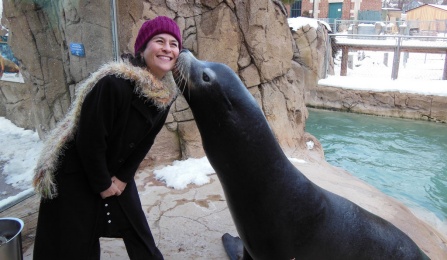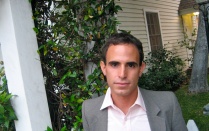Faculty Stories
Blurring the lines between wilderness and captivity

Professor Irus Braverman’s previous book, Zooland: The Institution of Captivity (Stanford, 2012), explored the complex web of agreements that governs how zoos manage their animals. Her newest book, Wild Life: The Institution of Nature (Stanford, 2015), broadens that inquiry to look at animal management in what one of her interviewees called the “megazoo.”
“I thought I was done with zoos after the previous project,” Braverman said. “It was quite intense and emotional.” But after Zooland was published, Braverman attended a conference where she witnessed a bitter debate between animal rights activists and conservationists regarding the legitimacy of keeping elephants in captivity: free them into the wild, said the animal rights people; there is no such thing as wild, said the zoo people in response.
Drawing on four years of fieldwork and participatory observations that include interviews with over 120 conservation scientists from all over the world, Wild Life explores what it means to be captive, what it means to be managed.
Braverman presented the book at a June 23 book launch event at Buffalo’s Talking Leaves bookstore. According to Braverman, the debate over in situ versus ex situ conservation – conservation in nature versus conservation outside of nature, or in captivity – is “a really important question that is very emotional as well. Some say we have to give up on this distinction; others say if we do that we’re basically giving up on nature. So there’s a lot at stake in this debate.”
Braverman begins her book with the emblematic story of a giant wolf snail that was introduced to French Polynesia so that it would eat the snails that were eating the agricultural crops. Instead, the snail chose to feast on dozens of species of “native” snails, to the point that most of them are now Extinct in the Wild. A few of the surviving species are now kept in zoos, “within the confines of tanks and thermometers.” Braverman asks, following her interviewees’ lead: “Is this nature conservation? What kind of a life is this as it is lived out of context?”
Braverman goes on to share the story of the Puerto Rican crested toad, which was thought to be extinct until one high school student found it in his family’s backyard, and the red wolf, which was hunted to near-extinction in North America, was bred in captivity and is currently regaining a foothold in its historical range. Among the other species whose stories she tells are golden lion tamarins in Brazil, black-footed ferrets in the American Plains, Sumatran rhinos in Indonesia, and Tasmanian devils in Australia. Such stories, she says, “show how conservation is moving away from in situ and toward an integration between conservation in situ and ex situ. The integration of the two is becoming more and more important, when nature has been changed in very dramatic ways.”
Captive breeding in order to reintroduce a species to the wild is one aspect of that integration. In some cases, zoos manage animals that cannot be immediately reintroduced into the wild for a variety of reasons, for example in case where their natural habitat has radically changed. “What happens when a species can only exist in captivity and there is no place in the wild for it?” Braverman asked. Most of the biologists she interviewed believe in maintaining such species in captivity, in the hopes that one day they can be returned to their natural home. But there are practical considerations as well, as director of U.S. Fish and Wildlife Service has explained to Braverman. It takes a lot of money and energy to preserve those animals – money and energy that could instead be invested in species that may still be saved in the wild.
In response to a question, Braverman explained why traditional species conservation typically critiques “de-extinction” narratives, such as those found in the summer blockbuster movie Jurassic World – namely, the idea that extinct species can be re-created through their DNA. What bothers the conservationists she interviewed, she explains, is “the hubris of the idea that humans can re-create life. In a way, extinction doesn’t matter much anymore if we can do this. But life can’t be so easily frozen and re-created out of context.”



